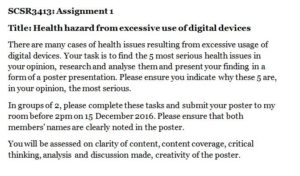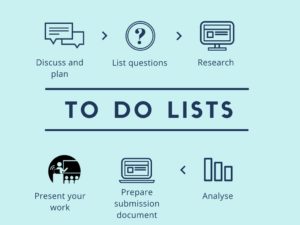Assignments are part of the assessment in all courses in university. You cannot go through a course without doing an assignment, hence the name course work. Assignments come in different sizes: little ones known as homework; medium ones called assignments; and the bigger ones called projects.
It is the norm for your lecturers to give you an assignment handout or document. When you are given an assignment, the first thing is to give the handout or document a once-over. Some lecturers go through the handout and explain the assignments. Make sure you listen carefully and ask if something is unclear. In fact, you can also make a suggestion or comment on length of assignment, due dates or anything that may, in any way, not help you give 100% to the assignment. Lecturers are often open to negotiation. After all they are running a class, not a regime.
Make sure you understand the basic info on the assignment: individual or group, what to submit, how to submit, when to submit and what are the criteria for assessment.
The next thing to do is to read the handout carefully. Understand the objectives or purpose of the assignment. Say you received the assignment like this one.
First, the basics. This is a group assignment, 2 per group, you need to submit a poster (a hardcopy to the lecturers room) which will need to be presented, it is due before 2pm on December 15 (if today is 1 December 2016, it means you have less than 2 weeks to complete the assignment).
Read it carefully and try to get the objectives. Simple enough: showcase 5 of the most serious issues to health from excessive digital device usage. Now you start your planning. Here is a to do list you can adopt.
A to-do list can help you plan what you need to do and how you as an individual or as a group can handle the tasks required for the assignment. Discuss and plan within the group on how best to tackle this task. List the possible questions that you have and that are pertinent to the assignment objectives. For example, for Assignment 1 above, some of the questions may be:
- How to define excessive usage?
- What are the existing health issues due to excessive usage?
- What makes one health issue more serious than another?
- Which should i pick? – why i picked them?
- Is there issues that affect one group of people more than others? For example, Issue A is serious for adults, but not so for children.
Armed with this lists of questions, you can start researching. Review articles in blogs, e-magazine, newspaper, journal and conference papers, statistics and other resources that are available to you in this day and age. Note all important facts and quotes into a list or a map for easy analysis. Mind maps are a good tool to have and to use.
Now that you are done with your analysis, prepare the document that you will be submitting. In the case of Assignment 1, it is a poster that you will use for presentation later. Do a ‘demo’ or draft version of the poster and discuss if you are happy with it. In fact, you can always bring this draft to get advice, comments and suggestions from your lecturer. When you are happy with the quality of your work, that it has fulfilled all the assessment criteria, submit it. Done!
**Note: It is a good practice to look at good examples on how to prepare your document. In this case, how to make a good poster. Learn from others, especially those who are more knowledgeable.
Next, you need to prepare for the presentation. With all the information you have gathered and analysed, presentation should come easily. You did the work, now reap the reward.

















